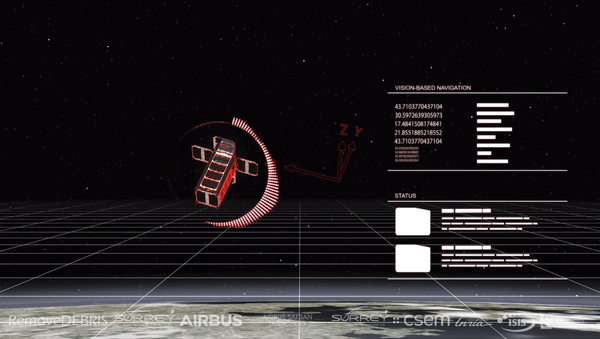It's been 61 years since the first launch of a satellite, Sputnik 1, into Earth's orbit. That's a long time to go without cleaning up after yourself and scientists are raising concerns over the potential repercussions of the human junk floating through space — and crafting solutions, such as RemoveDEBRIS.
The project is funded by the European Commission and a number of private partners including Airbus, who supplied the harpoon, and Surrey Satellite Technology Limited, who built the spacecraft.
— Друзья космонавтики (@tostarstogether) March 21, 2018
While not anywhere near as littered as Earth's oceans, our orbit maintains its share of trash — 16.5 million pounds (7,500 tons) of it, to be precise. According to a 2013 NASA press release, more than 500,000 pieces of trash whip around the planet at 17,500 mph. That number has likely increased since then, as launches have not ceased.
The debris comes in a variety of forms: rocket shells, spacecraft that have lost communication, screws, etc. According to the NASA, even a fleck of paint traveling at 17,500 mph poses a hazard to future missions in the event of a collision.
When it comes to the debris, size matters. As of 2013, more than 20,000 pieces of junk larger than a softball were in orbit, 500,000 pieces the size of a marble or larger and "many millions of pieces of debris that are so small they can't be tracked," according to NASA.
NASA's chief scientist for orbital debris, Nicholas Johnson, has said that the greatest risk to space missions "comes from non-trackable debris."
While all space vehicles are at risk from space junk, the International Space Station (ISS) is especially vulnerable, NASA said. RemoveDEBRIS was launched from Earth Monday with a SpaceX Falcon 9 rocket and is expected to arrive at the ISS Wednesday with a number of other supplies, Sputnik reported.
A few weeks after it arrives, astronauts will use the station's robotic arm to launch the 220-pound space Roomba. While China and Japan's space agencies have developed their own test cleaners, the harpoon-and-net system has never been tested in space.
Prof. Guglielmo Aglietti, the principal investigator for the mission, told the BBC that, while others have instead pursued robotic arms as a means to clean up Earth's orbit, "all these different technologies have their advantages and disadvantages."
The net and the harpoon, Aglietti says, "could be considered more risky in certain circumstances than a robotic arm." However, "if your piece of debris is spinning very fast, it becomes very difficult to capture it with a robotic arm and an approach with a net could work better."
When its testing is complete, RemoveDEBRIS will burn up in Earth's atmosphere, hopefully leaving few traces of itself in our orbit.


